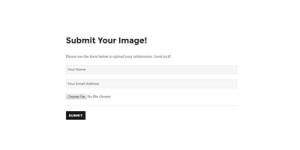For people who spend all day running tests with other people, sometimes it’s important to turn the lens on ourselves. Here are three steps to self-improvement:
Question thyself
What can you tell me about your test participants? You will likely know their occupation, sex, age group, manner of speech, and web savviness. If the test is in person, you will observe their clothing choices, hair style, the look in their eyes, the way they smell (a little heavy on the cologne, perhaps?), facial expressions, posture, body language, and maybe even the car they drive.
This information can be extremely helpful and you should pay close attention to all of it. Just be aware that as you do, your efficient mind is using heuristics to create assumptions about people which may or may not be true. Your assumptions can be fueled by past experiences with similar people, your mood that day, how tired you are, or people you know who have that same grating tone of voice. Most importantly, they can be influenced by the results you want to see.
Thinking critically about the conclusions you reach in light of your biases will help keep things on track. That’s important because these assumptions contribute to the creation of personas, which influence content, design, layout, and copy on a web site.
Know when to keep mum
I find it particularly challenging to keep quiet when someone is getting visibly frustrated with an interface and is asking me for help and direction. It’s painful watching someone flounder, but those moments are invaluable to your work. The moment you slip in even a subtle clue, you’ve skewed your results. Resist the temptation to help your participant complete a task and instead offer a few words of affirmation and a reminder that it’s the system which is being tested.
If you are are a relationally-minded person, you will run across participants who you really click with. It can be easy to let your rapport grow, allowing room for personal conversations slip into the test. I’ve found that a comment here and there to help maintain that connection through the test is helpful, but more than that can derail the test and take up precious time.
Be, um, a good talker
Creating rapport and establishing a professional but friendly environment is a learned skill. Psychologists have identified four language forms that suck the power out of your speech:
- Hesitations: words like ‘Uh” and “You know” which decrease your perceived confidence
- Disclaimers: “I’m not really the authority on the topic, but …” or “I know this sounds strange, but …” which cheapen what you’re about to say
- Qualifiers: “sort of,” “kind of,” or “I guess” which decrease assertiveness and add an element of doubt
- Tag questions : “It would be best for you to speak your thoughts out loud while you complete these tasks, don’t you think?” or “This is the best way to do this, isn’t it?”
Everyone feels more comfortable when it’s obvious that you are comfortable, confident, and enjoying your work. Plus, you end up enjoying it more! At the same time, make sure to use everyday words and avoid industry jargon. The more your participants can feel like they are naturally using the web as they normally would, the better your results will be.
The bonus is that forming these habits will not only help you conduct better usability tests, they will help you in all areas of business. Being aware of your biases, knowing when not to speak, and communicating confidently will never go out of style!
Emily Smith is an information architect and usability consultant for the web and Apple devices. She co-works with other web professionals in Greenville, SC and can be found online at emilysmith.cc.


